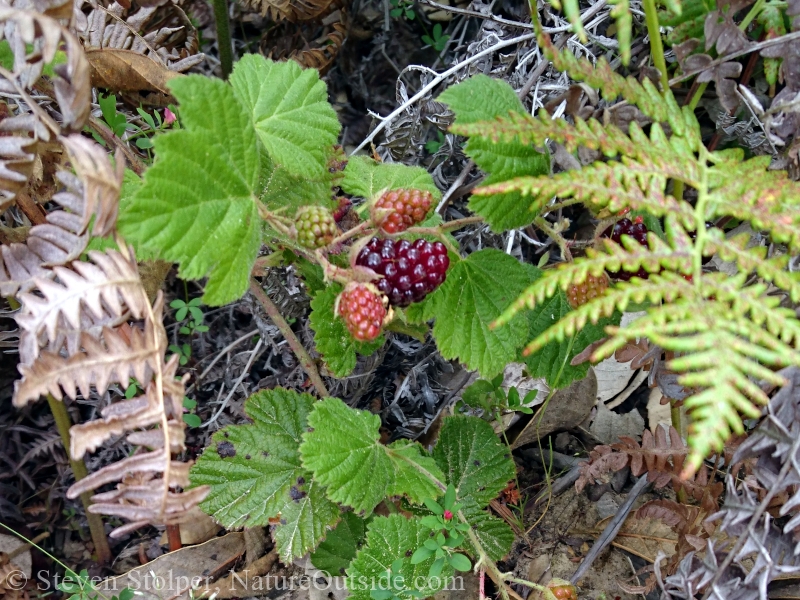
The northern California sky is piercing blue as we hike along the top of the ridge. The mid-morning sun begins to warm the breeze that drifts over us from the Pacific Ocean, 18 miles away.
The dirt trail we’re following doubles as an emergency fire road. Naked trunks of Manzanita and Madrone sparkle red and orange in the morning sun. Along the verge, wildflowers salute the morning. Neon pink flowers of Chaparral pea dazzle like glowing jewels.
It’s a day like this that reminds me that the best things in life are not things.
I’m leading a small group to the ruins of the Johansen Shingle Mill. It was built in 1927 to harvest redwood trees from the forests two hundred feet below us. These giant trees stretch more than 300 feet into the air. Their roots touch ancient underworlds that once saw the light of day more than 2,000 years ago.
Berries Delight
Our band gets strung-out as each small group hikes at their own pace. There’s little chance of getting lost on a trail like this.
My girlfriend at the time and I form our own little group. I appreciate her pleasant company as we chat like finches, barely noticing the time.
The wildflowers are amazing.
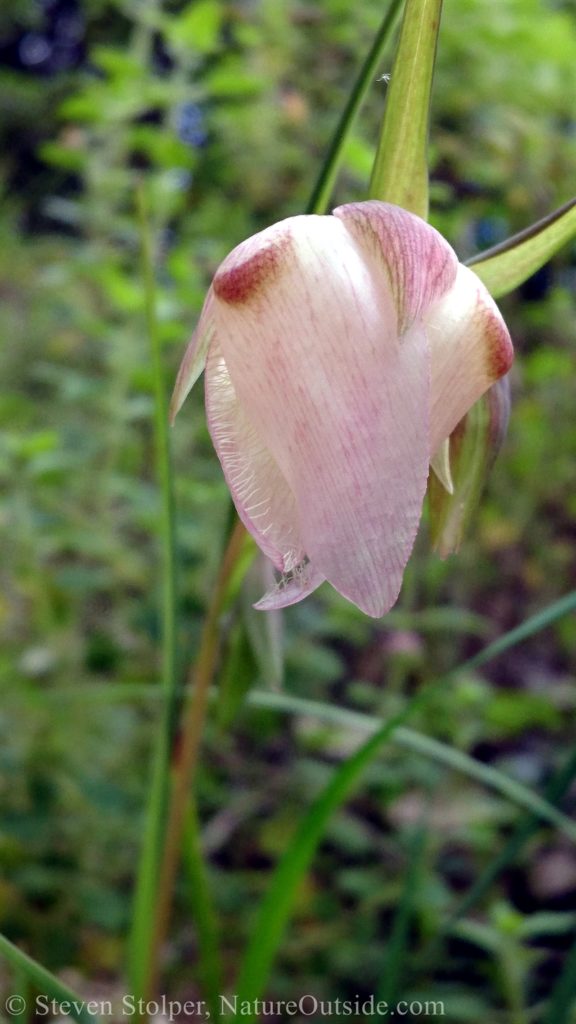
White Globe Lilly (Calochortus Albus)
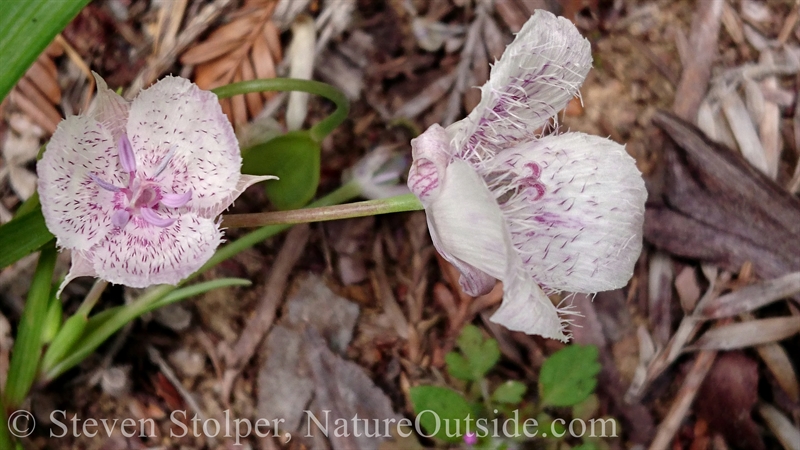
”Cat’s Ear” type Mariposa Lilly
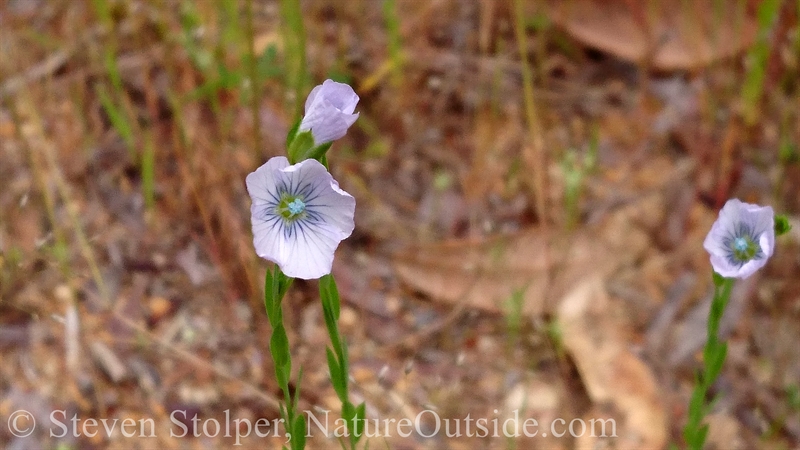
A blue wildflower I am not familiar with
After a while, we come to a bend in the road where shade overhangs one shoulder. This side of the road is awash in blackberry brambles. The dry climate keeps them from growing more than ankle high.
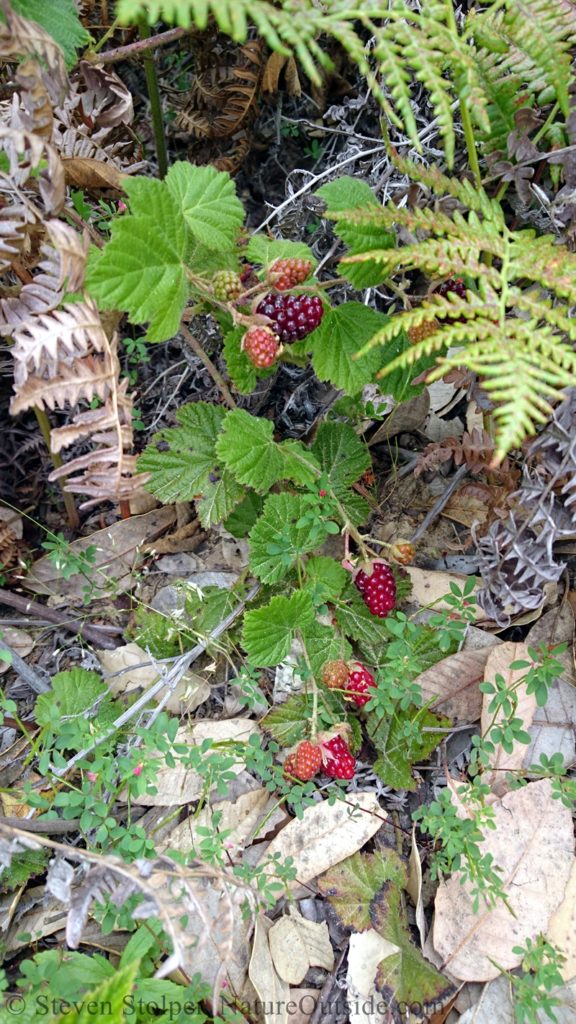
Blackberries running along the ground
The blackberries are irresistible. Imagine champing down on the plump fruit and savoring the sweet juice. I motion my girlfriend to the side of the road as I squat down beside the blackberries.
Hidden Danger
As I reach for a blackberry, I sense rather than see danger. I withdraw my hand before I even realize what I did. I’m puzzled. Did I see something move underneath the blackberry leaves?
I change my position, wondering if I see something. I know this feeling too well not to heed it. Then, with my arm half extended I detect movement.
Something moved… Snake… Rattlesnake!
My hand was so close to it! I experience a moment of terror that rivals the time two enraged rattlesnakes almost fell on me.
The hand I extended now bars the way as my girlfriend reaches for a berry. “I see a rattlesnake!” I exclaim. I’m worried she won’t be deterred.
The two of us stare searchingly down at the blackberries. Mentally I try to remove the branches, to see through them to find the snake.
Now I’m certain it’s there. I can sense it moving. I just can’t find it. Then, it crystalizes like an apparition appearing from a fog.
It’s a baby Northern Pacific Rattlesnake. Can you spot the snake in these pictures?
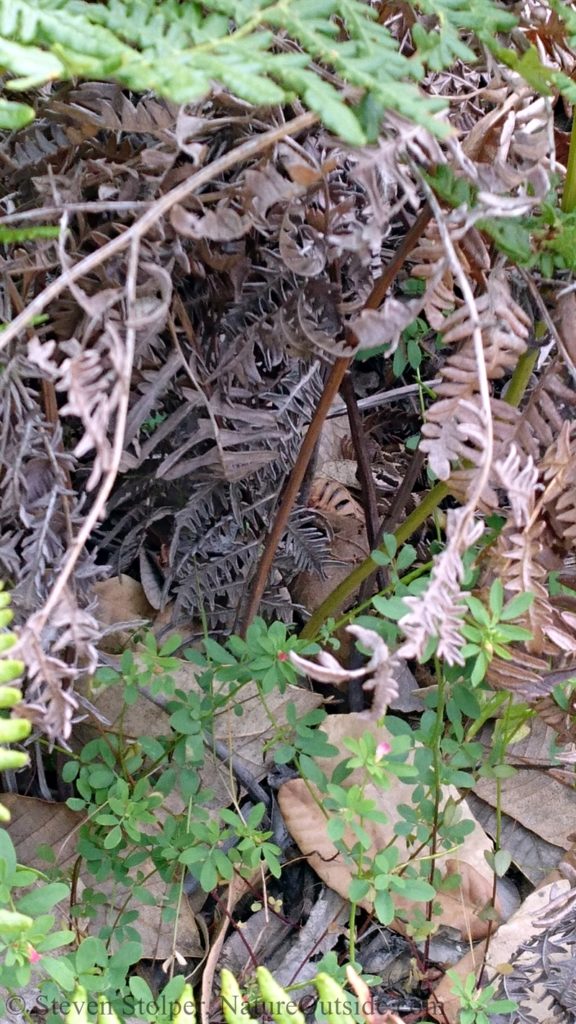
Can you spot the rattlesnake in this picture?
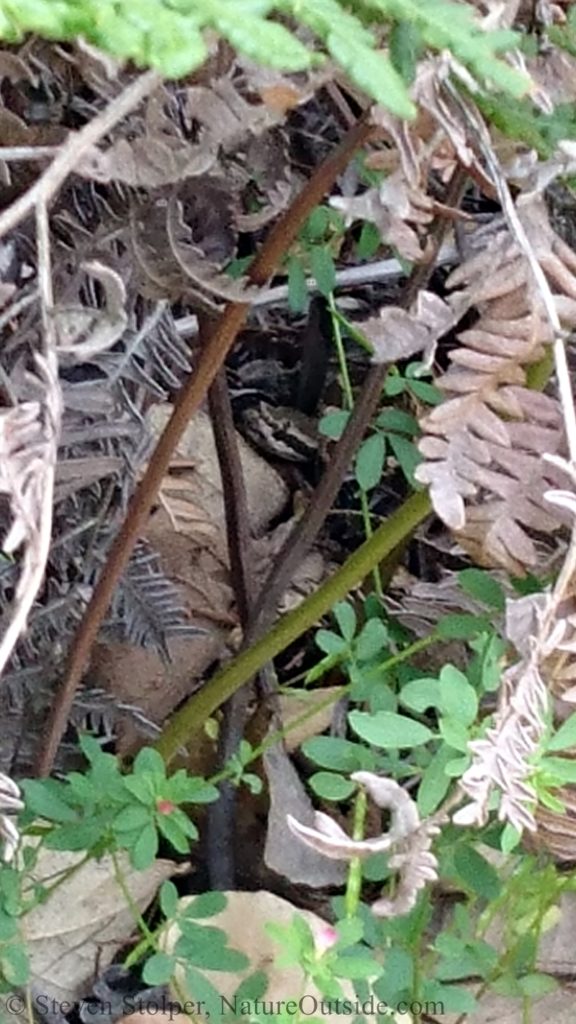
The rattlesnake is staring into the camera
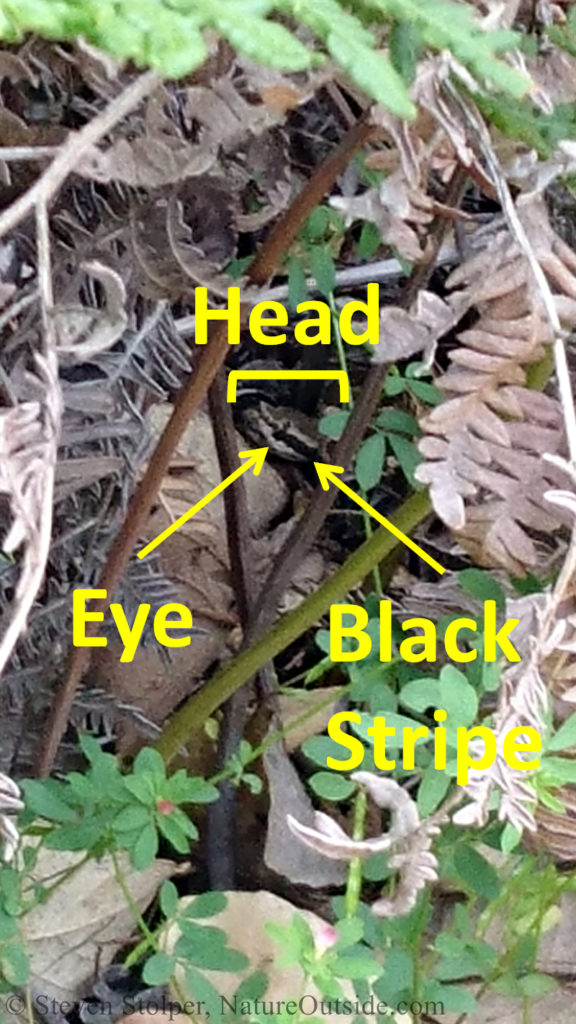
Baby Northern Pacific Rattlesnake (annotated)
The three of us regard each other silently. The snake is the only one who’s calm. I replay the moment I reached for the berries.
Nature gives a shower of gifts and a heavy rain of lessons. In my article on rattlesnake safety for hikers, I stress that you never put your hands where you can’t see. This is a variation of that rule. I could see my hands, but the branches concealed what lay beneath.
No berries today. So says the rattlesnake.
Northern Pacific Rattlesnake
The Northern Pacific Rattlesnake (Crotalus oreganus oreganus) is native to this area of California. The “Crotalus” part of its scientific name comes from a Greek word meaning “little bell.” This, of course, refers to its famous rattle.
These heavy bodied snakes prefer drier habitats, like the ridge we’re standing on. Rattlesnakes are “pit vipers” which means they have two pits that sense infrared radiation (heat) when hunting warm-blooded prey. There is one pit on each side of the front of its head, above the mouth.
Rattlesnakes have long, hollow fangs connected to venom glands. The fangs inject a toxic venom which quickly immobilizes its prey.
The snake eats birds, lizards, snakes, frogs, insects, and small mammals. These mammals include mice, rats, rabbits, hares, and ground squirrels.
Rattlesnakes are ambush predators. They strike at passing prey and follow the trail of the envenomated animal. They find the immobilized prey and swallow it whole.
How Old is This Snake?
Rattlesnakes are ovoviparous. The mother keeps her fertilized eggs inside her body and gives birth to living young. Gestation is thought to be 90-110 days, with births usually occurring from August through October. Females can have between 4 and 21 young in a season.
Since it is the end of May, I estimate the snake is between eight to ten months old.
Why no Warning?
Rattlesnakes are a natural wonder. When it rattles, a snake can shake its tail 90 times per second (90 Hz). This is faster than most hummingbirds’ wing beats. By comparison, human athletes manage a paltry 8 muscle contractions per second (8 Hz).
But baby rattlesnakes have just a nub, and don’t rattle an alarm.
How Dangerous are Rattlesnakes?
When it comes to venomous snakes, we’re lucky to live in the United States. Rattlesnakes are generally not aggressive. Their first line of defense is to remain motionless. Camouflage usually masks their presence.
Rattlesnakes’ second line of defense is a diplomatic retreat. The heavy-bodied snakes glide into cover if given the chance. This is what the baby snake was attempting when I spotted it.
Finally, if they’re threatened, the snakes rattle the auditory alarm that makes them famous. This is their third defense.
Rattlesnakes strike as a last resort. Many bites occur when people handle the snakes or accidentally touch them while walking or climbing. Most reported bites occur on the hands, feet, and ankles. Even then, the snakes don’t want to waste their precious venom on an animal they can’t eat. Between 25%-50% of rattlesnake bites are “dry.”
It’s true that rattlesnake bites can be extremely dangerous. But they’re not aggressive, belligerent, or high strung. They only bite without warning when trodden or touched. That is why I was breathing a bit hard when I realized how close my hand came to the head of the snake.
The same cannot be said of snakes in other parts of the world. I’ve hiked in Africa, Australia, and Central America. I appreciate how our rattlesnake is a good citizen compared to venomous snakes from other regions.
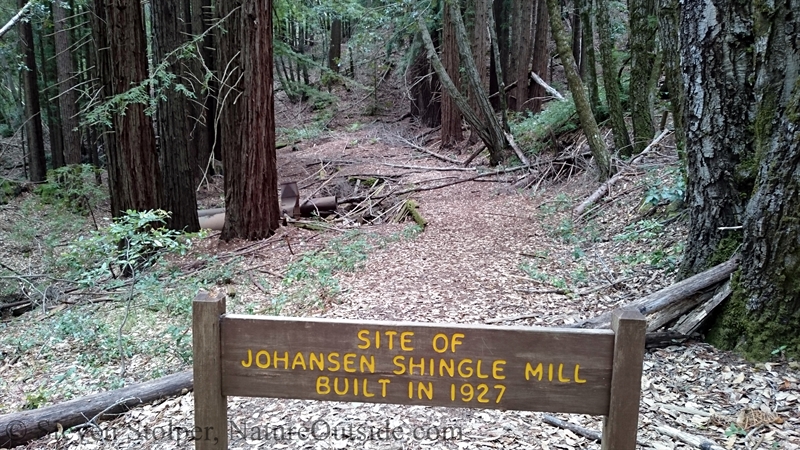
We descend into the redwood forest and arrive at the mill wiser than when we started.
What About You?
Have you ever come close to being bitten by a snake? Have you ever had “that feeling” save you from danger?
Share your story in the comments below.
Related Articles on NatureOutside
Mountain Kingsnake – Beauty and Danger!
For fun facts and useful tips, join the free Bushcraft Newsletter.



Hi Steve! I enjoyed your article on the “baby” rattlesnake. We have three types of rattlesnake here in Mississippi. In my 73 years of living in Mississippi, I have seen less than five! All of them were timber rattlers. We have Pygmy rattlers that are small and rarely seen. Mt father was bitten by one about 100 years ago and survived. Our numerous copperheads and cottonmouths are another story!
Tommy
Hi Tommy! I’m glad to hear your father survived. Mississippi sure has its share of venomous serpents. While living on the East Coast many years ago, I had a copperhead crawl between my legs when I was not paying attention. It’s an experience I will not soon forget!